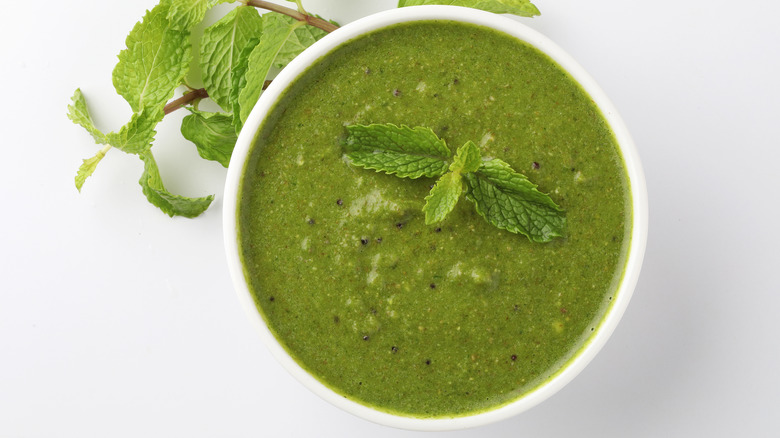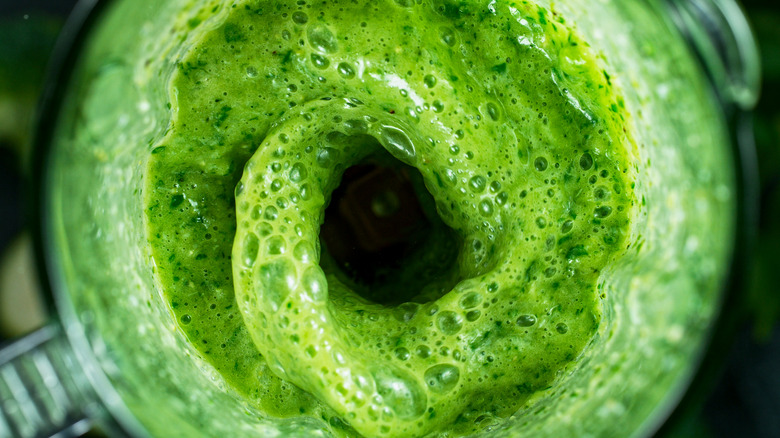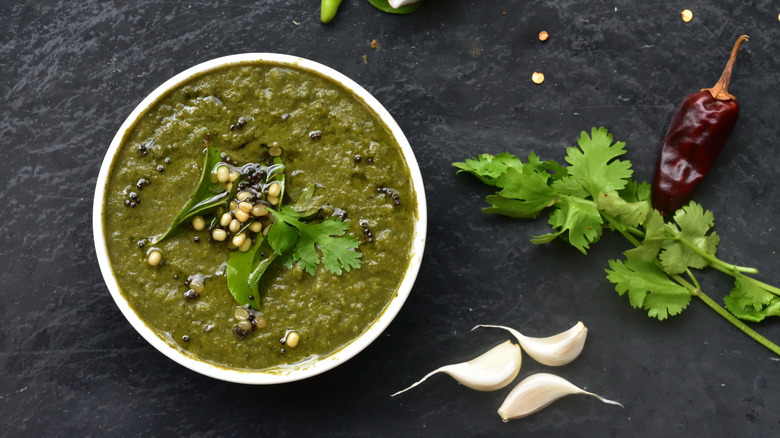What Is Mint Paste And How Is It Used?
Mint (mentha) grows almost anywhere and is an extremely persistent plant. If you've ever tried to clear mint from a garden bed, you know those little guys always reappear next spring, but that's not necessarily a terrible thing.
Mints like spearmint and peppermint are great for you. According to UC Health, the methanol in mint leaves is an anti-inflammatory and is great for relieving colds and nausea. But that's not all! Mint leaves can also be delicious. There is nothing more comforting than a hot cup of mint tea during the winter or more refreshing than a mojito in the heat of summer. People even infuse their drinking water with mint to give it a boost of flavor and sip on some of those health benefits. But we don't often see mint being used blatantly in Western cuisine, it is often not the key ingredient in family recipes or known to be the star of the show at restaurants –- though how cool would it be to have a mint-themed restaurant?
What is mint paste?
According to India's #1 food site, Tarladalal, mint paste, also known as pudina paste or pudina ka paste, is made by blending mint leaves in a blender with water until they have formed... well, a paste! You can customize your mint mixture by adding things to it like garlic, chilies, salt, or sugar if you'd like. You can also affect the consistency of the mint paste by adjusting the amount of water you use. The more water added to the blend makes a smoother and thinner paste so you can adjust the consistency based on your needs. You can store the paste by freezing it in ice cube trays or in an air-sealed container in the fridge.
To make your own mint paste, Food Network directs you to rinse and pat dry your leaves, then place them into a blender or food processor, and puree the mint with whatever additions you'd like until the leaves are small. Then add oil –- or water depending on what you will use this paste for –- and continue combining until you have an evenly-blended mixture.
How to use mint paste
Mint is technically an herb, which means that you should add it to your food for an extra refreshing experience! Now, before telling you what to use this paste on, it is important to note that you should not use peppermint leaves for this paste. Peppermint has extremely high methanol content and will make whatever you add it to taste like toothpaste. Instead, use a milder mint like Egyptian mint for savory meals or strawberry mint for deserts (via Balcony Garden Web).
Mint paste is popularly used as a spread like pesto, to marinate meats, blended into icy beverages, and used for chutney. What is chutney? Chutney is a preserve of fruits or, in our case, herbs mixed with vinegar, sugar, and spices (via MasterClass). Mint paste chutney is an absolutely amazing way to revitalize a meal, especially dishes that are naturally spicy,, which is why mint paste is so popular in Indian cuisine.


